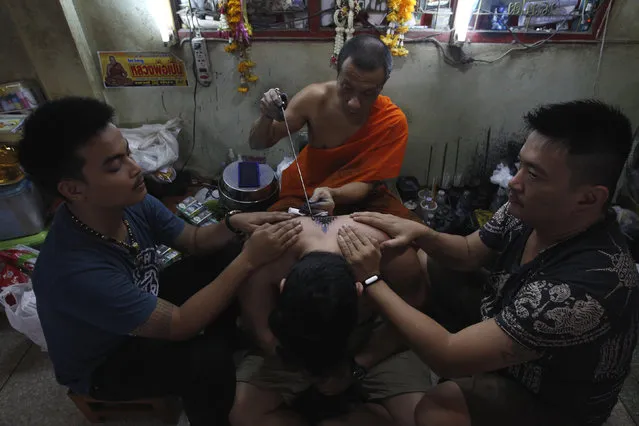
A Buddhist monk uses a traditional needle to tattoo the body of a man at Wat Bang Phra in Nakhon Pathom province on the outskirts of Bangkok, Thailand, March 18, 2016. Believers from across Thailand travel to the monastery to have their bodies adorned with tattoos and to pay their respects to the temple's master tattooist. They believe the tattoos have mystical powers, ward off bad luck and protect them from harm. Wat Bang Phra translates into English as the “Monastery of the Riverbank Buddha Image”, a reference to the temple's history as a spot where a revered Buddha image from Ayuthaya was recovered from a boat which sank in the Nakhon Chaisi River alongside where the monastery was founded. The temple is also known for the daily tattoos or Sak Yants given by the monks that live there, and especially for the Wai Khru festival held on the temple grounds once a year during March, when disciples gather to pay respect to the spirit of Luang Pho Poen. Upon entering the Wat, one of the first things a person sees on the wall is a very large banner of tattoos available. Unless there is a specific choice requested, the monk will begin with a simple tattoo at the top of the back. Right before reaching the monk, the people next in line to the one being tattooed will assist the monk with holding the one receiving the tattoo still. The monk uses a single long thin needle about 18 inches in length and about four millimeters in width. The tip of the spike is split into two (like a split cane), so that each stab of the spike produces two dots of ink in the skin. There are about 8 of these needles in a pot of a type of cleaning solution. Sometimes the monk will sharpen the needle with fine grade sandpaper before beginning. The monk will then select from several different rubber templates with the design of choice. He will apply the template to ink and then press it on to the recipients back to transfer the design. When ready to begin, he will dip the tip of the needle into a mix of oil, probably palm oil, Chinese charcoal ink, and possibly snake venom. He then begins to trace the pattern. The typical tattoo takes about 3,000 strikes to complete. The monk dips the needle into the ink about every 30 seconds. When complete, he blesses the tattoo and blows a sacred Kata (Ghata) on it to infuse it with power. For men, the monk uses the charcoal ink. For women he uses a transparent ink and will use a glove in order to not touch the female body. The sanitation of the needle and ink are unknown. Receiving a tattoo at the Wat Bang Phra temple potentially exposes a person to HIV, Hepatitis B, or Hepatitis C. There are approximately 580,000 people living with AIDS in Thailand. However, it is important to note that according to the “UNAIDS 2006 Report on the Global AIDS Epidemic” there are no recorded cases of contracting HIV or AIDS from a tattoo needle due to the absence of a reservoir inside the needle containing enough blood to deliver the virus into the body to pass infection. (Photo by Chaiwat Subprasom/Reuters)
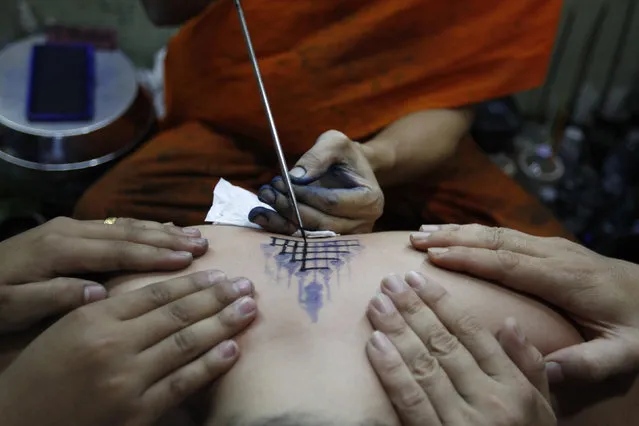
A Buddhist monk uses a traditional needle to tattoo the body of a man at Wat Bang Phra in Nakhon Pathom province on the outskirts of Bangkok, Thailand, March 18, 2016. Believers from across Thailand travel to the monastery to have their bodies adorned with tattoos and to pay their respects to the temple's master tattooist. They believe the tattoos have mystical powers, ward off bad luck and protect them from harm. (Photo by Chaiwat Subprasom/Reuters)
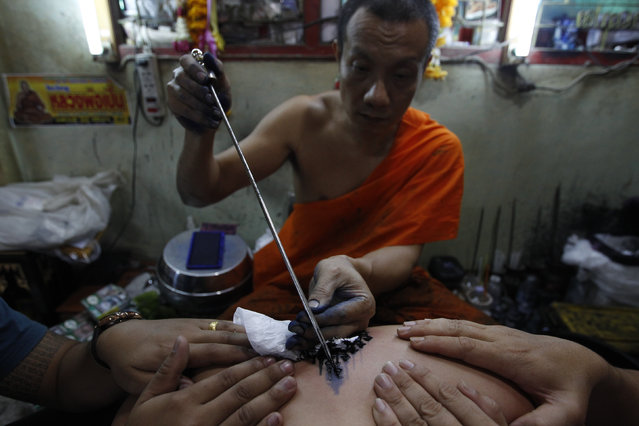
A Buddhist monk uses a traditional needle to tattoo the body of a man at Wat Bang Phra in Nakhon Pathom province on the outskirts of Bangkok, Thailand, March 18, 2016. (Photo by Chaiwat Subprasom/Reuters)
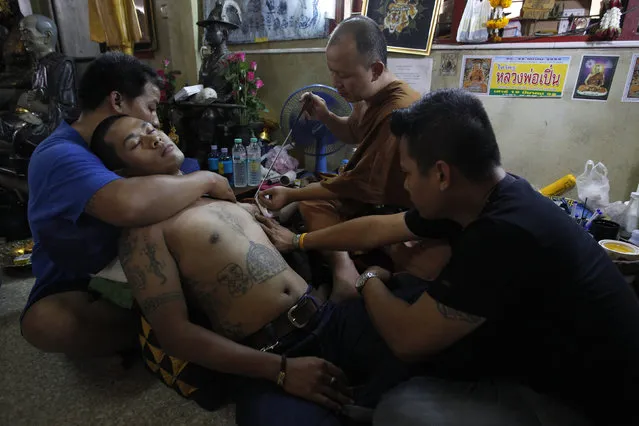
A Buddhist monk uses a traditional needle to tattoo the body of a man at Wat Bang Phra in Nakhon Pathom province on the outskirts of Bangkok, Thailand, March 18, 2016. (Photo by Chaiwat Subprasom/Reuters)
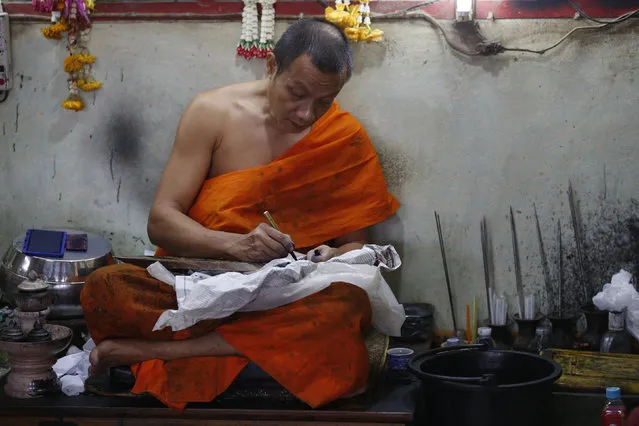
A Buddhist prepares his instruments before tattooing the body of a man at Wat Bang Phra in Nakhon Pathom province on the outskirts of Bangkok, Thailand, March 18, 2016. (Photo by Chaiwat Subprasom/Reuters)
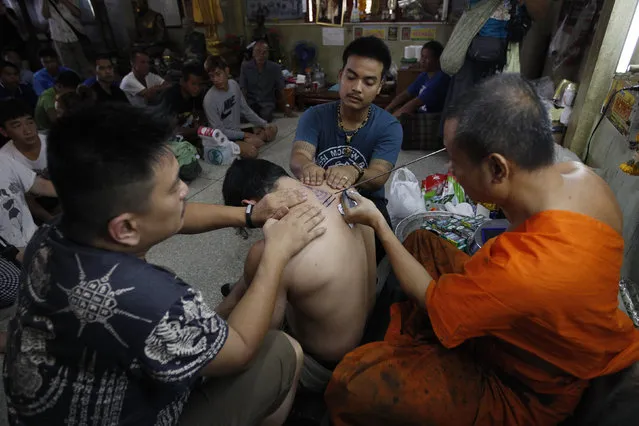
A Buddhist monk uses a traditional needle to tattoo the body of a man at Wat Bang Phra in Nakhon Pathom province on the outskirts of Bangkok, Thailand, March 18, 2016. (Photo by Chaiwat Subprasom/Reuters)
19 Mar 2016 12:44:00,
post received
0 comments
